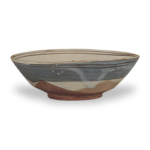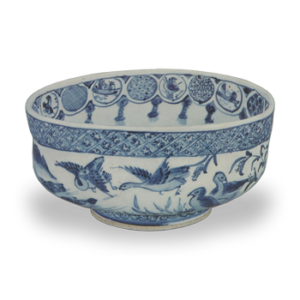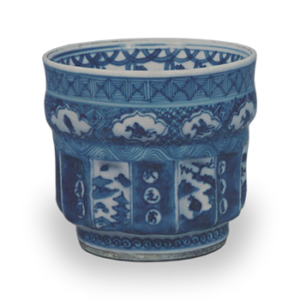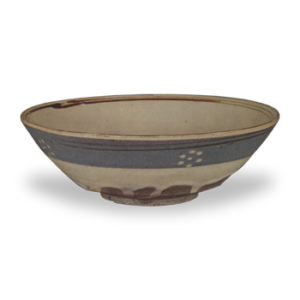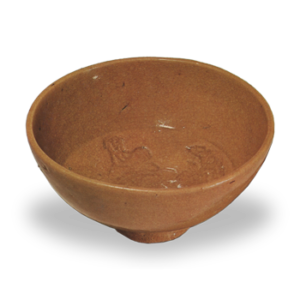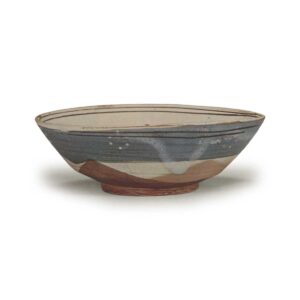
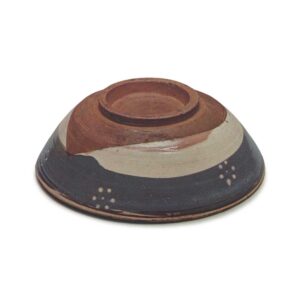
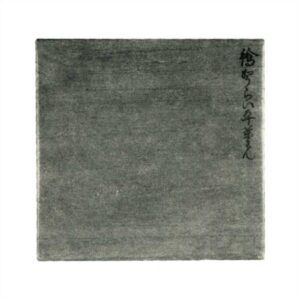
Attachment
Inner box, calligraphy by Kuwayama Kosai
Dimensions
Height: 5.2-5.4cm, Bore: 15.6-15.8cm, Base diameter: 6.8cm, Height: 0.5cm, Weight: 295g
Collection: Fujita Museum of Art, Osaka
Many people think that this is a Koryo, or Korean, tea bowl because of the term “painted Koryo,” but it is a tea bowl made at a kiln in northern China called the Zizhou Kiln during the Yuan and Ming dynasties.
Japanese people are inquisitive and careless, and often make this mistake.
When fired, the clay of the Zizhou kiln turns gray or light brown in color. Therefore, the glaze color on the top does not show up if it is left as it is, so the base is always made up first. In this tea bowl, the lower part of the outer surface and the white part of the inner surface are covered with white mud over the base. If a colorless transparent glass glaze is applied on top of this, a beautiful white finish is achieved. If a plum bowl design is applied in black on such a white glaze, a so-called “Hinata” plum bowl is produced, but here, black mud is further applied and plum bowls are scattered in white on top. The black mud ground becomes like that of Nezumi-Shino through the glaze, and the harmony of colors such as white, rat, white, and black is extremely bright and strange. This is probably the best work of “Kage” plum bowls.

